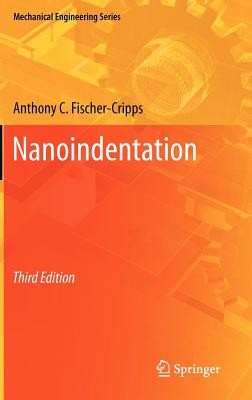
- We will send in 10–14 business days.
- Author: Anthony C Fischer-Cripps
- Publisher: Springer
- ISBN-10: 1441998713
- ISBN-13: 9781441998712
- Format: 15.6 x 23.4 x 1.8 cm, hardcover
- Language: English
- SAVE -10% with code: EXTRA
Reviews
Description
Nanoindentation, Third Edition gives a detailed account of the most up-to-date research in this important field of materials testing. As in previous editions, extensive theoretical treatments are provided and explained in a clear and consistent manner that will satisfy both experienced and novice scientists and engineers. Additionally, numerous examples of the applications of the technique are provided directly from manufacturers of nanoindentation instruments. A helpful series of appendices provides essential reference information that includes a list of frequently asked questions.
The new edition has been restructured to provide results of the latest research and developments in the field of mechanical testing while retaining the essential background and introductory, but authoritative nature, of the previous editions. The new edition also expands on the instrumentation and applications chapters by including material sourced direct from the instrument manufacturers in this field.
Aimed at graduate student level, this book is designed to fill a need associated with the use of nanoindentation as a quantitative test method for mechanical properties of small volumes of materials.
EXTRA 10 % discount with code: EXTRA
The promotion ends in 19d.13:38:26
The discount code is valid when purchasing from 10 €. Discounts do not stack.
- Author: Anthony C Fischer-Cripps
- Publisher: Springer
- ISBN-10: 1441998713
- ISBN-13: 9781441998712
- Format: 15.6 x 23.4 x 1.8 cm, hardcover
- Language: English English
Nanoindentation, Third Edition gives a detailed account of the most up-to-date research in this important field of materials testing. As in previous editions, extensive theoretical treatments are provided and explained in a clear and consistent manner that will satisfy both experienced and novice scientists and engineers. Additionally, numerous examples of the applications of the technique are provided directly from manufacturers of nanoindentation instruments. A helpful series of appendices provides essential reference information that includes a list of frequently asked questions.
The new edition has been restructured to provide results of the latest research and developments in the field of mechanical testing while retaining the essential background and introductory, but authoritative nature, of the previous editions. The new edition also expands on the instrumentation and applications chapters by including material sourced direct from the instrument manufacturers in this field.
Aimed at graduate student level, this book is designed to fill a need associated with the use of nanoindentation as a quantitative test method for mechanical properties of small volumes of materials.


Reviews